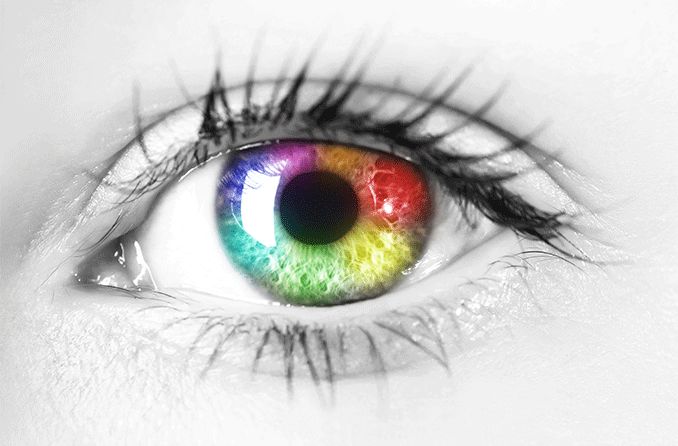Almost all humans have some brown in their eyes. That’s because eye color comes from melanin, the same brown pigment that gives color to our hair and skin.
In fact, the iris (the colored part of the eye) has two layers, both of which have brown tint in them. Most people have brown tint in the back layer, but lighter eyes have less tint in the front layer.
Blue eyes have almost no tint in the front layer of the iris. On top of that, blue eyes are not truly blue. Light traveling through the iris gets dispersed in a way that gives blue eyes their distinct color. (This same effect makes the sky appear blue.)
Similarly, people with hazel, gray and green eyes have varying quantities of tint in the front layer. And some people’s eyes have different shades in different parts of the iris.
Eye color: The role of genetics and environment
Genetic research suggests that until about 10,000 years ago, pretty much everyone had brown eyes. Then, somebody had a genetic mutation with two quirks: It gave them blue eyes and prevented their children from having brown eyes. Now, geneticists suggest everybody with non-brown eyes can trace their eye color back to that one person.
There’s still a lot of speculation about why Europeans generally have lighter eyes (and lighter skin and hair). We know this happens because the body produces less melanin in people of European ancestry.
It’s been suggested that the cooler climate of northern Europe may have encouraged the rise of a population of people with lighter eyes, hair and skin. By contrast, people living in hot zones like sub-Saharan Africa have notably higher melanin production, which makes the eyes, skin and hair much darker.
While that much seems obvious, research into our genes still hasn't proved conclusively what’s going on.
“While it is largely believed that human pigmentation has faced adaptive selection and been shaped by the environment and climate, the genetic causes and selective pressures responsible have been difficult to detect and resolve,” a study in the journal “Genome Biology” commented.
That same study suggested an intriguing possibility: Blue-eyed northern Europeans may have somehow adapted an ability to fend off seasonal affective disorder (S.A.D., also known as the winter blues). Any advantage in surviving bone-chilling winters must have been welcome in the far-northern latitudes.
SEE RELATED: Eye color genetics
